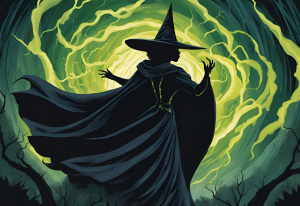Does the “Honeymoon Period” really have to end?
On a surprisingly cool autumn morning last semester, I was walking into the Mills building and overheard a hysterical girl speaking to her partner over the phone.
What caught my attention was her statement, “But I’m so comfortable with you, this just can’t be the end.” I inferred that she and her boyfriend (I’m assuming she was straight for simplification purposes) were breaking up after having been together for some time. And while I empathized with her—feeling her heart break from a distance—I was somewhat disinterested in her break up. Rather, what inspired me was the comment on comfort within a relationship.
The idea that we grow satisfied within a relationship—whether that’s physically, sexually, or emotionally—is an idea I am personally familiar with. My past long-term relationships were both earmarked with a level of comfort between my partners and I. And while I find facets of that form of satisfaction within my current relationship, I feel as if something is different. Which leads to my current question of musing: What are the stages of a relationship and when do you find yourself in this comfortable stasis?
The idea of various stages within a relationship is not a novel idea. In fact when typing “stages of…” into Google “stages of a relationship” is a close second behind “stages of a cold.” This is an interesting idea—that a relationship is in some ways a virus of the heart that can be broken down into a set of definable symptoms. I’m skeptical of this endeavor, thinking in a postmodernist manner that no relationship can be defined into tight categorizations.
And yet, after reading psychological breakdowns of romance, I have found parallels within my own relationship and these findings. The first stage is often referred to as the “Honeymoon Period,” which is based in our infatuation with this new person. I certainly relate to this, as I clearly remember referencing my now partner to friends as “the perfect gentleman” and even stating early on, “He might just be the love of my life.” I also remember the butterflies—those pesky but welcoming feelings of lust, anguish, and craving all panicking my stomach and heart.
Reading further into the stages, there is a period of “Landing” following the “Honeymoon” where doubt supposedly begins to take over. You begin to scrutinize your partner and question your decision in love. And as your relationship progresses, schedules and to-do lists quickly begin to impact your shared life—supposedly leaving little room for love.
This is also where comfort begins to ensue. You might start feeling physically comfortable around each other in ways you didn’t initially think possible—god forbid he or she might actually hear you fart.
But these stages are where I find fault with the model in regards to my own relationship. Sure, I am comfortable physically and emotionally with my partner, and yes that means he has heard and seen me exhibiting normal bodily functions, but the idea that the Honeymoon has an ending bothers me.
Love is a constructed idea based on an emotional connection between two (or more) people. The supposed “symptoms” of the Honeymoon don’t have a strict ending or some point at which they become socially unacceptable. Sure, life intervenes but that does not mean you cease looking at your partner and thinking, “God, he is everything I could ever want.”
So as your relationship evolves, it is important to recognize that your emotions are your guidance. Comfort becomes irrelevant; rather it is about preserving and continuing the love you felt in the beginning in order to maintain a promising future.
To the girl outside of Mills: Thank you for inspiring me. I hope you will continue to find love and let it shape you in new ways.
The opinions on this page do not necessarily reflect those of The Sandspur, its staff or Rollins College.












Be First to Comment